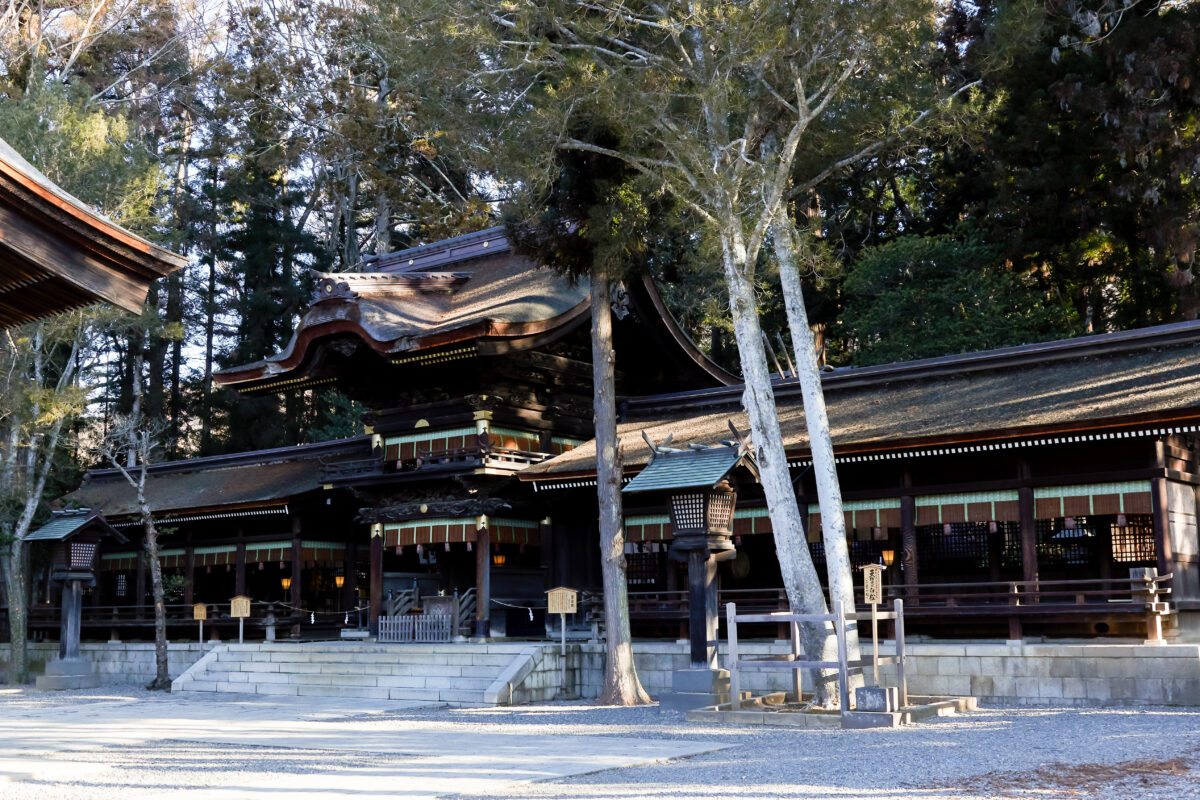
It’s just before 6 a.m. at Suwa Taisha Shimosha Akimiya Shrine. Gradually, the sun rises above the horizon as morning light begins to illuminate your surroundings. You bow slightly at the torii gate before entering the shrine complex. Just as you make your way past Neiri no Sugi (sleeping cedar), one of Shimosha’s seven mysteries, you begin to hear the rhythmic beating of drums emanating from the Kagura-den. These drums signal the beginning of the Asamikesai, or morning ritual. Standing before the heihaiden, a hall of worship where the ritual is held, you see the locals who steadfastly join this Shinto ritual every day. Only the pounding of drums and singing of birds ring throughout the grounds of the shrine.
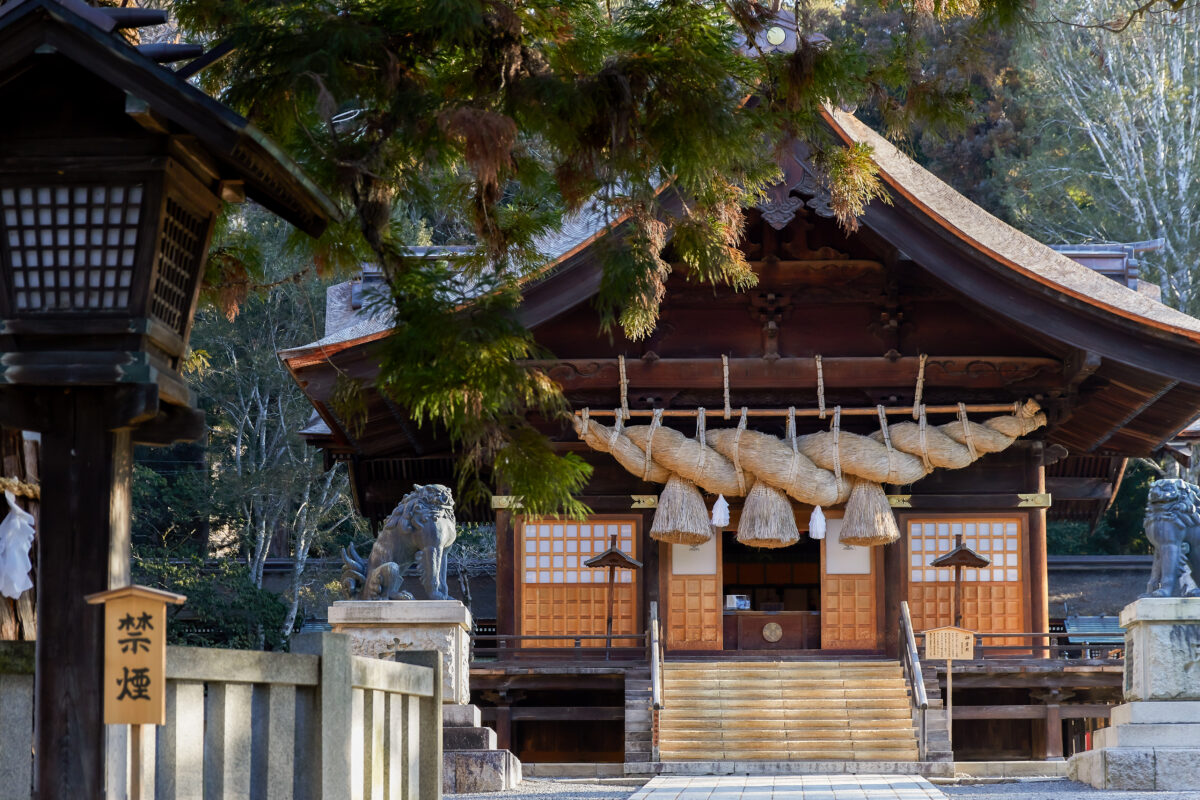
Once the drumming stops, a priest in temple attire descends from the kagura-den while holding a sanbo*1 in both hands. Each step of the priest is met by a light crunch of the surrounding gravel as he makes his way to the heihaiden. He climbs the steps one by one, deliberate in his stride, and places the sanbo atop the side altar.
On the front right, he reads the haraekotoba*2 to start the ritual. Afterward, onusa*3 is used to purify the shinsen*4 and those in attendance. First, the shinsen is offered to the god standing before him and is then offered to those standing in front of the heihaiden. The blessings of the gods pour down upon each worshipper standing in the fresh morning air, providing a most auspicious start to the day.
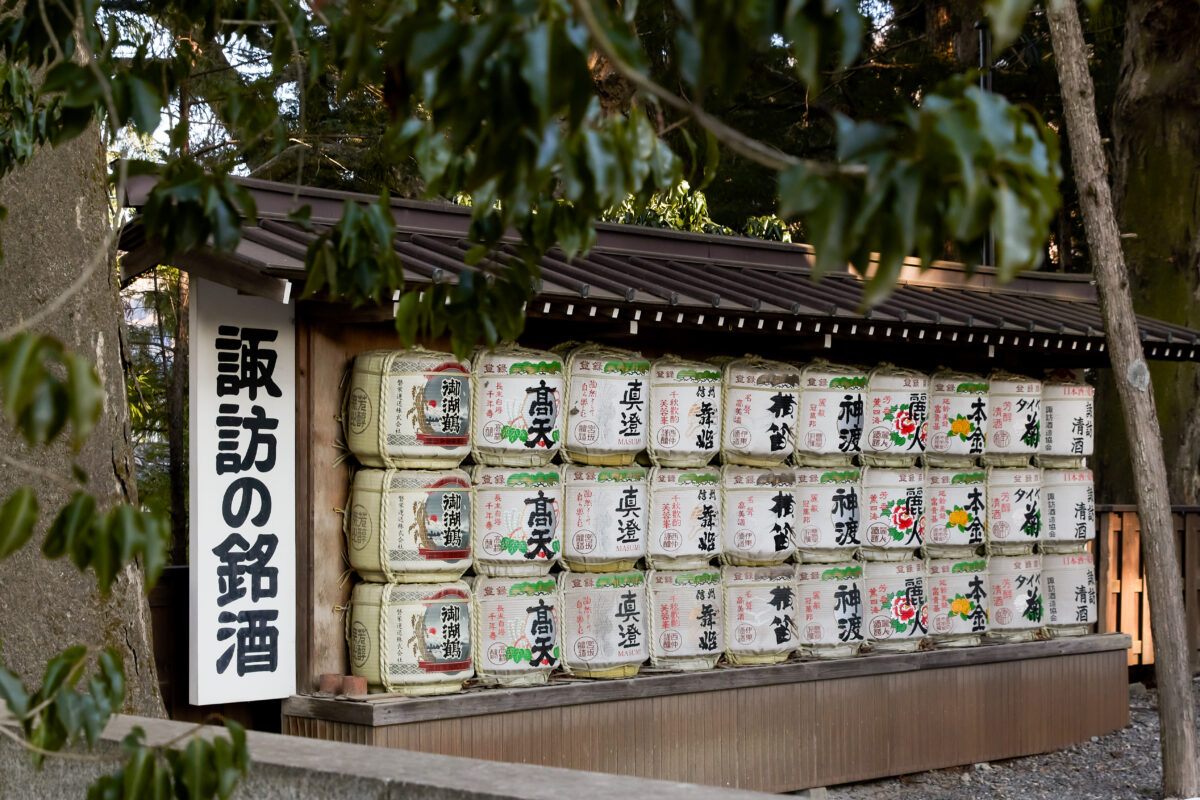
The priest faces forward while moving in a shisshin*5 manner before offering the sanbo to the altar. This offering is known as the kensen*6. After bowing twice and clapping twice, he will recite the morning’s prayer (after the spread of COVID-19 last year, the priests would also offer a prayer about the virus). In case you are wondering, the offerings in the sanbo at Suwa Taisha are rice, sake, salt, and water. After all, these are the ingredients necessary for life.
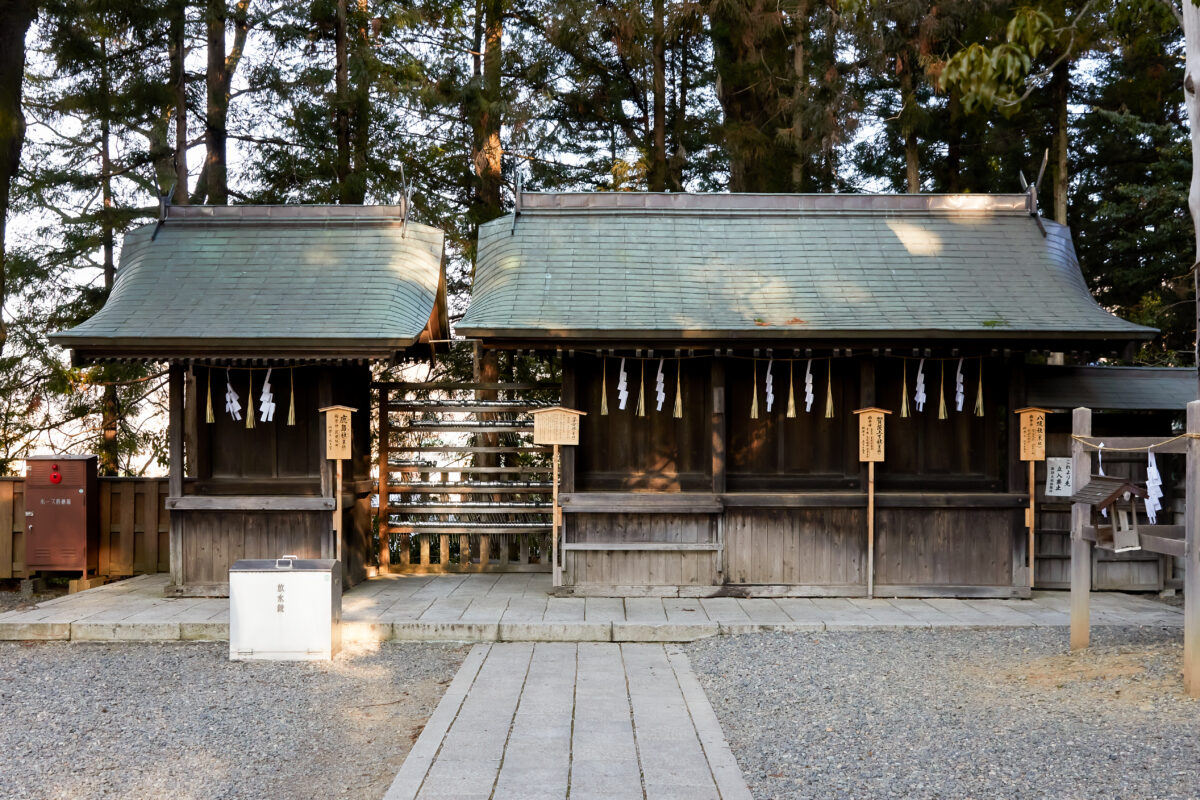
The priest then bows in the directions of all of the surrounding shrines of the Suwa Taisha shrine complex. While facing the heihaiden, the priest will worship twice each on the left and right sides.
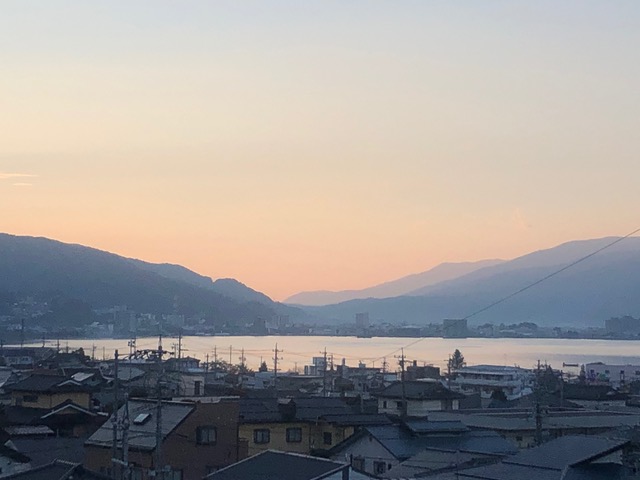
The morning sun is now high above, beaming from behind the hall of worship and creating a divinely beautiful view.
At my ryokan Gingetsu, we guide guests through this Shinto ritual in the morning if they wish (only in Japanese). The ritual is held every morning at the four main shrines of Kamisha (Maemiya and Honmiya) and Shimosha (Harumiya and Akimiya).
Come rain or shine, the priests offer these prayers of thanks for peace and health to the gods every single day of the year. One cannot help but think the protection of the gods is cast over the Suwa area thanks to these rituals.
Suwa is where the gods reside. Though it is held early in the morning, we invite anyone connected to the Suwa region to participate in this ritual and form a connection with the gods here.
This experience is unique to Suwa, and we promise the time spent here will be unforgettable.
– Footnotes- (Source: Kojien Dictionary)
* These daily prayers are performed both in the morning and in the evening. The evening version is known as yumikesai.
*1 Sanpo: A vessel for offerings to gods or the nobility. Also used to place things used in ceremonies.
*2 Haraekotoba: The script read during purification.
*3 Onusa: A staff used by priests. Hemp.
*4 Shinsen: Food and drinks for the gods. Rice, sake, animal meat, fish, vegetables, salt, water, etc. An offering.
*5 Shikko: Kneeling (before nobility, etc.) and moving forward and backward with your knees
*6 Kensen: Offering to the gods.
Contributor: Tomoko TAKEI
A representative of the hot spring ryokan Gingetsu. Despite her age, she is known as the “young proprietress” because the old proprietress is still active. She is fond of history, books, kimono, and of course hot springs. This year, she is aiming to add a library to her ryokan using the books from her private book collection.